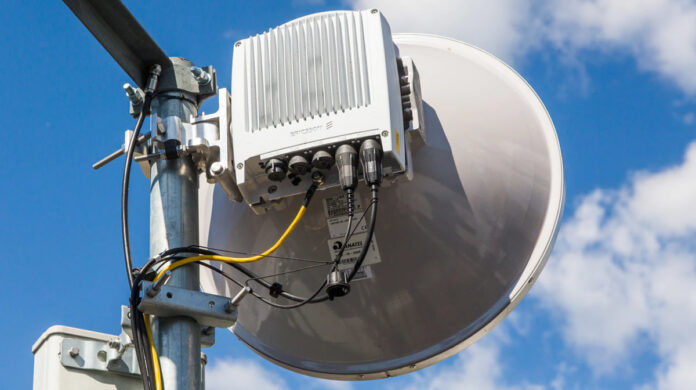Kenya’s largest mobile service provider – Safaricom, has chosen Ericsson to supply microwave solutions that will see the mobile service provider attain multi Gbps data capacity for mobile broadband services as well as efficient use of spectrum. Safaricom recently started its official migration from current 4G network to 5G, with initial sites setup within Nairobi, Kisumu and Kakamega towns.
Ericsson’s technology based on the MINI-LINK 6352 comes with numerous advantages, including the ability to achieve higher capacity levels, efficient use of spectrum, lower power consumption as well as simplified operations and maintenance. The solution is based on E-band platform that capitalizes on recent technology advancements which now enable microwave, radio wave platforms to achieve Gigabit per second, up from previous Megabit per second.
The partnership will see Safaricom attain impressive capacity levels in areas where fibre is not available. The Microwave solution is not only aimed at areas that are yet to be covered with fibre optic but is touted to achieve multi Gbps links and provide the much-needed capacity for Safaricom to expand data growth through Radio Access Network (RAN).
Speaking on the partnership, Safaricom’s CEO Peter Ndegwa said the company was committed to giving customers better experiences through quality networks as well as building a solid base to evolve the provider’s network. Ndegwa further said the telco would now be able to continue to inspire and innovate in meeting frequent changing requirements of its customers from the partnership.
Safaricom has been shifting its focus from traditional voice and text services in recent times to data and mobile money provision, partly due to dwindling revenues from those services. The telco is looking to offer additional services including a savings solution to boost its revenues.
In order to meet various demands, Safaricom is looking to tap into Ericsson’s solution, a move that would allow it to offer a mix of fibre and microwave solutions for its Radio Access Network sites.
Speaking on the partnership, Head and Vice President of Ericsson East and South Africa Todd Ashton said, building an efficient Microwave backhaul network with end-to-end performance required a high node capacity, compact and modular building practice as well as advanced packet functionality. Todd further said the partnership will help develop as well as deploy future-ready network with a new level of capacity, speed and quality.

